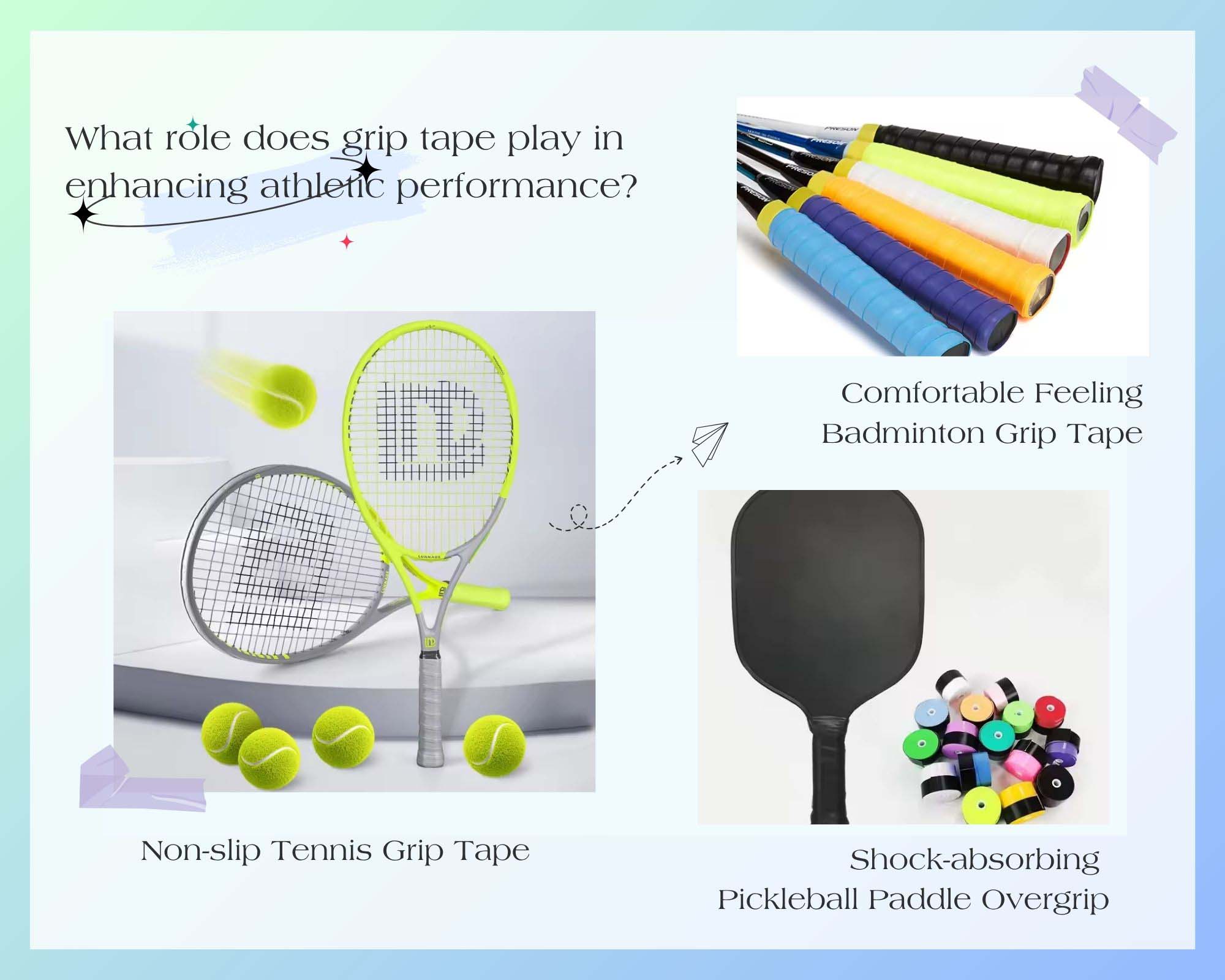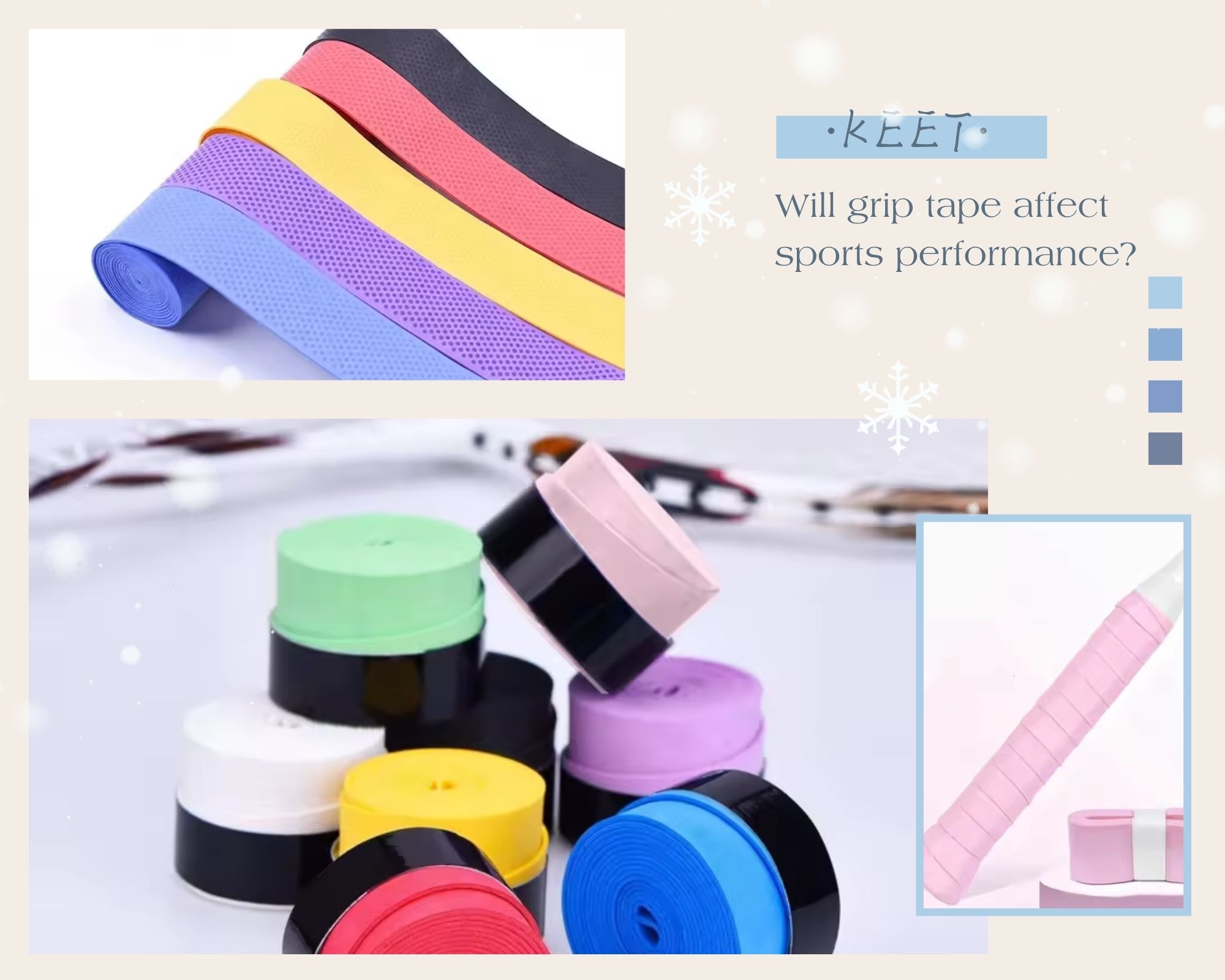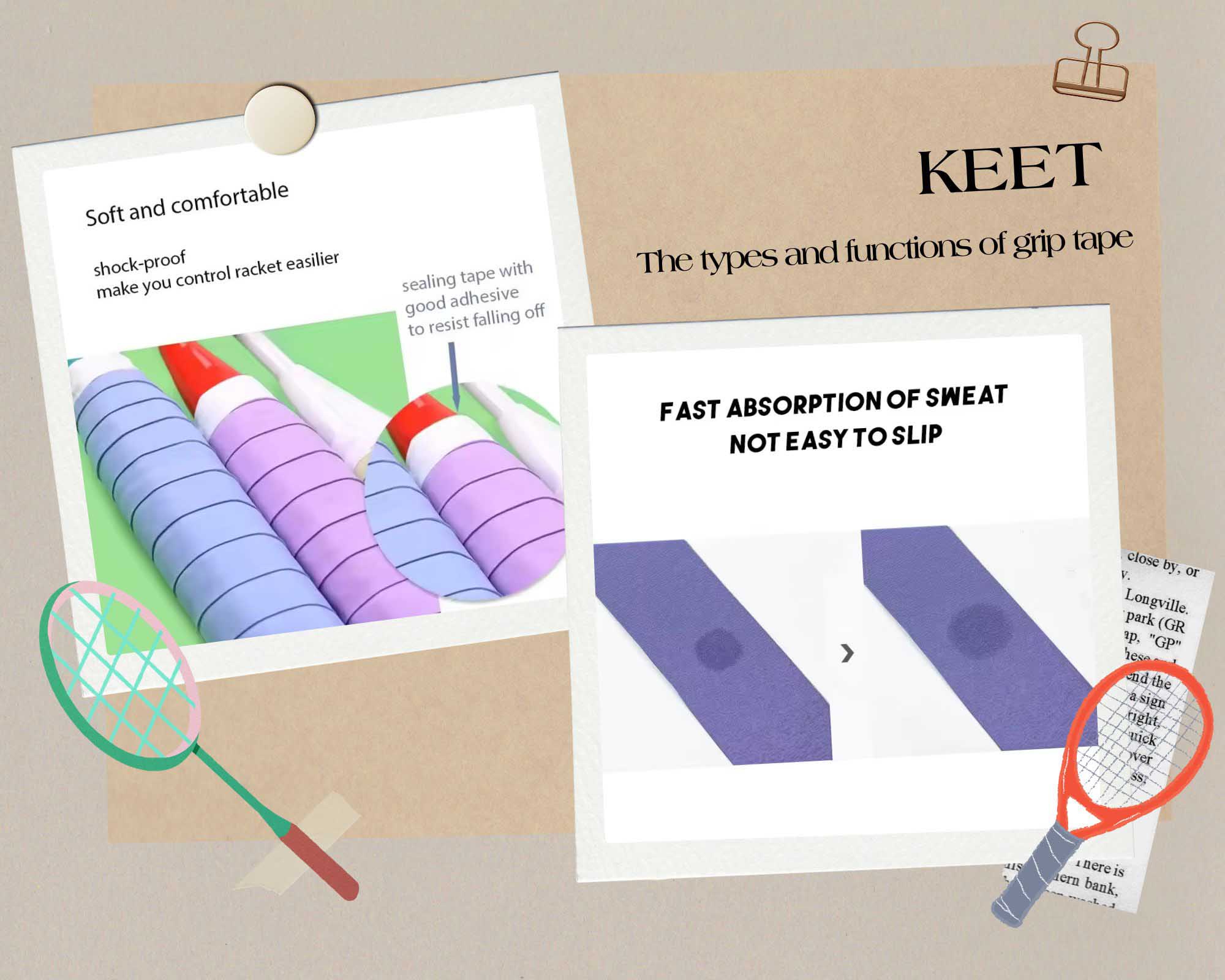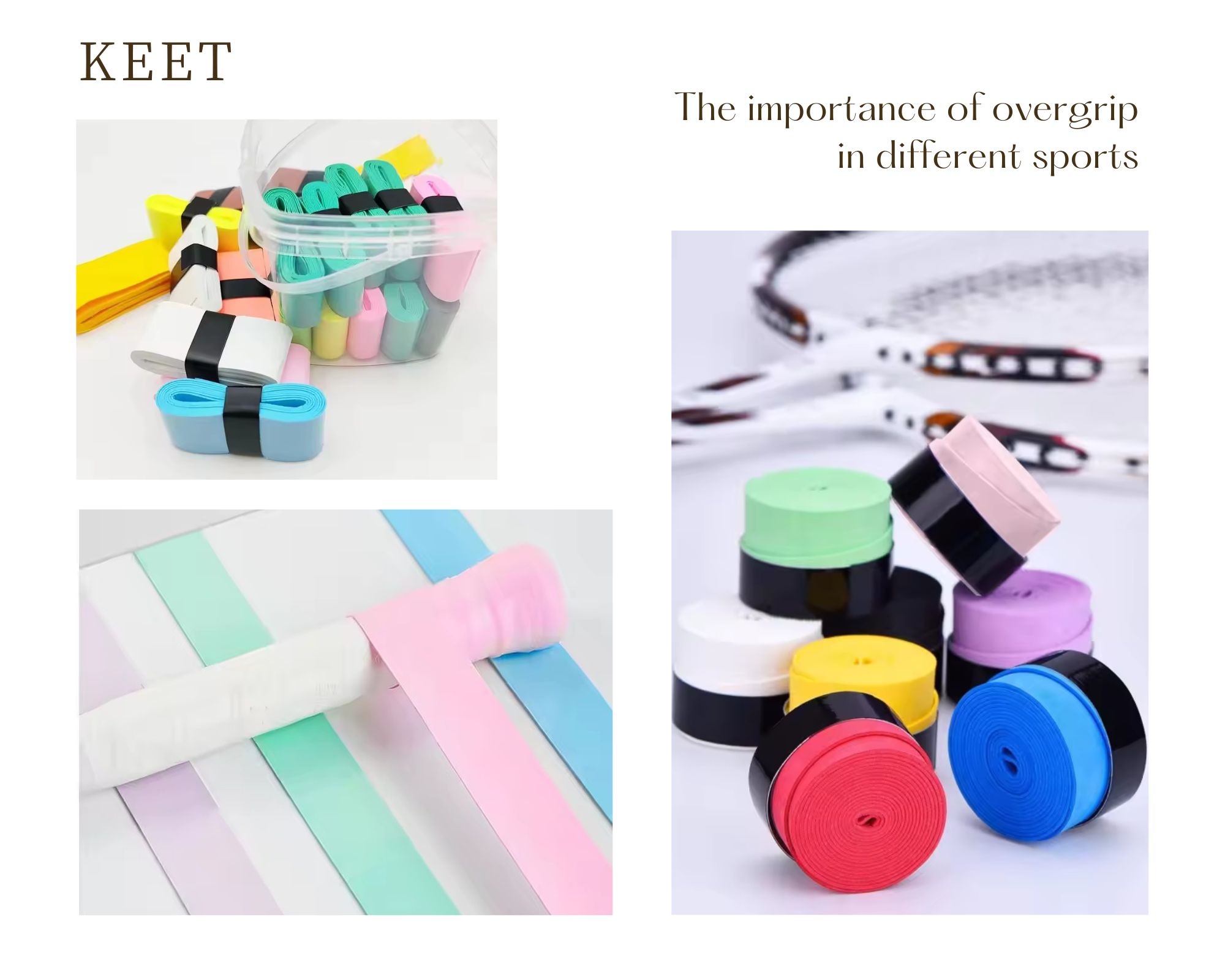What are the common types and functions of overgrips?
May 14, 2025
In sports such as badminton and tennis, overgrips are indispensable accessories for rackets. They have a significant impact on an athlete's grip experience and performance during competitions. Overgrips come in a rich variety of types, each with different functional focuses. Let's take a detailed look at them below.
I. Types of Overgrips
1.Tacky Overgrips
Tacky overgrips are a relatively common type available on the market. Their surfaces are coated with a special adhesive substance that provides excellent friction. When an athlete grips the racket, the tacky overgrip can firmly "cling" to the palm, effectively preventing the racket from slipping in the hand. For athletes who prefer rapid swings and frequently change their hitting motions, tacky overgrips are a good choice. For instance, in badminton matches, players often need to execute powerful smashes and quick flat drives. Tacky overgrips ensure that the racket remains securely in hand during high-speed movements, guaranteeing hitting accuracy and power transmission. Moreover, tacky overgrips usually come in a wide range of colors and patterns, which can meet the individual aesthetic preferences of different customers.
2.Towel Overgrips
Towel overgrips get their name from their unique material, which is primarily made of soft towel fibers. This material endows towel overgrips with excellent water-absorbing capabilities. During physical activity, athletes' hands tend to sweat profusely. Towel overgrips can quickly absorb the sweat, keeping the palms dry. Unlike tacky overgrips, the surface of towel overgrips is relatively rough, enhancing friction by increasing the contact area with the palm. For athletes who sweat heavily or engage in prolonged high-intensity exercise, towel overgrips can prevent the racket from slipping out of the hand due to wet and slippery palms. For example, in some tennis marathon matches where players exercise for a long time and sweat a great deal, towel overgrips can continuously perform their sweat-absorbing and anti-slip functions, providing athletes with a stable grip experience.
3.Keel Overgrips
Keel overgrips have a rather unique design. They have a raised "rib" structure embedded inside the overgrip. It can simulate the natural grip shape of the human palm, providing additional support for the palm. When an athlete grips a racket with a keel overgrip, they will feel that the racket fits the palm more closely, resulting in a more natural grip. Keel overgrips are suitable for athletes who have high requirements for grip stability, especially beginners. Beginners are not yet proficient in grip postures and power application techniques. Keel overgrips can help them better master the grip strength and angle, reducing errors caused by improper gripping. At the same time, keel overgrips can also alleviate hand fatigue to a certain extent during prolonged gripping.
II. Functions of Overgrips
1.Sweat Absorption and Anti-slip
Sweat absorption and anti-slip properties are among the most fundamental and important functions of overgrips. During intense physical activity, athletes' hands sweat heavily. If the racket handle lacks good sweat absorption and anti-slip performance, the racket is likely to slip out of the hand. This not only affects the competition result but may also lead to athlete injuries. Different types of overgrips achieve sweat absorption and anti-slip functions through their unique materials and structures. Tacky overgrips rely on the adhesive substance on their surfaces to increase friction and can also absorb a small amount of sweat to some extent. Towel overgrips, with their powerful water-absorbing ability, quickly soak up hand sweat, keeping the palms dry. Keel overgrips provide stable grip points through the rib structure and also possess a certain degree of sweat-absorbing properties in their materials, ensuring that athletes can firmly hold the racket in various situations.
2.Softness and Comfort
A soft and comfortable feel can enhance an athlete's grip experience and reduce hand fatigue. During prolonged exercise, athletes need to frequently grip and swing the racket. If the overgrip is too hard, it will compress the palm, causing pain and discomfort. Tacky overgrips are usually relatively soft in texture, conforming to the curves of the palm and providing athletes with a comfortable grip. The towel overgrips is soft and skin-friendly, like holding a soft towel, further enhancing the comfort of gripping. Although keel overgrips have a rib structure, their overall material still maintains a certain degree of softness, not making athletes feel overly stiff.
3.Shock Absorption and Stability
At the moment of hitting the ball, the racket is subjected to an impact force from the ball, which is transmitted to the athlete's hand through the racket. If the overgrip lacks good shock-absorbing properties, prolonged exercise can cause significant vibration damage to the hand, affecting the athlete's performance. Some high-quality overgrips are specially designed in terms of materials and structures to achieve shock absorption and stability functions. A stable overgrip design also ensures that the racket does not shake during hitting, guaranteeing hitting accuracy and stability.
Overgrips come in diverse types with various functions. Customers can choose suitable overgrips based on their product requirements to meet the purchasing needs of their target consumer groups for overgrips, enhance consumers' athletic performance, and enable them to enjoy a more comfortable and safe sports experience. KEET welcome OEM and ODM orders tailored to your requirements and are happy to provide samples upon request. As a trusted supplier, we are committed to building long-term partnerships based on reliability and mutual success. We warmly invite both domestic and international customers to collaborate with us for shared growth and success.




 Network Supported
Network Supported